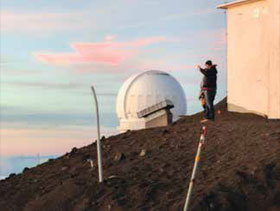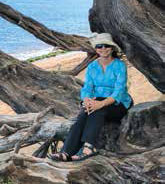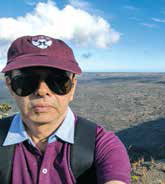Comprising of beaches, volcanoes and observatories, Hawaii is truly a place worth visiting at least once in every lifetime

The joy of global travel is that you always learn to expect the unexpected! I have walked across a frozen Volga river in Russia, discovered that some cities in Peru are at a higher elevation than Mount Machu Pichu and ran for life to the airport in Mombasa, Kenya where riots broke out just after we inaugurated an APTECH Computer Training Centre in the city in the late nineties. Even with this knowledge, the last thing we would have expected when we embarked on a week-long holiday to the sunny isles of Hawaii would be that two days after arrival we would be huddled in warm coats in below freezing temperature…. in Hawaii! A true treat for me on the eve of my birthday, which we were celebrating on Big Island Hawaii.
The mountaintop we visited for this unique experience is Mauna Kea, which has proved to be an ideal location for a large number of independent astronomical research facilities and large telescope observatories because of its dark skies, low humidity, near equatorial location and its position above most of the water vapour in the mountains. The facilities are located in an “astronomical precinct” on 11,000 acres of land protected by the Historical Preservation Act and are called the MaunaKea Observatories (MKO).

The history of the site is truly intriguing. On the "Big Island" of Hawaii, Mauna Kea is considered the highest island mountain in the world. Fans of Everest need not panic; the mountain starts in the Pacific Ocean and has only 14000 feet above the sea level, high enough and cold enough for the summit to be often covered with snow and the air extremely dry.
Some 50 years ago, a gentleman called Kuiper began looking into the possibility of an observatory on Mauna Kea. After testing, he discovered the low humidity was perfect for infrared signals. He persuaded Hawaii Governor John A. Burns to bulldoze a dirt road to the summit where he built a small telescope on Pu'u Poli'ahu, a cinder cone peak. Kuiper also convinced NASA to fund larger facilities and also open up projects to competitive bids. After considerable testing, the best locations were determined to be near the summit at the top of the cinder cones. Testing also determined Mauna Kea to be superb for night-time viewing due to many factors, including the thin air, constant trade winds and being surrounded by sea. Jefferies built a 2.24-metre telescope with the State of Hawaii agreeing to build a reliable, all weather roadway to the summit. Building began in 1967 and first light was seen in 1970.
By 2012, the Mauna Kea Science Reserve had 13 observation facilities, each funded by as many as 11 countries. It is one of the world's premier observatories for optical, infrared, and submillimetre astronomy


Other groups began requesting subleases on the newly accessible mountaintop. By 2012, the Mauna Kea Science Reserve had 13 observation facilities, each funded by as many as 11 countries. It is one of the world's premier observatories for optical, infrared, and submillimetre astronomy.
The altitude and isolation in the middle of the Pacific Ocean makes Mauna Kea one of the best locations on earth for ground-based astronomy. It is an ideal location for submillimetre, infrared and optical observations. An adjacent visitor information station is located at 9,200 feet (2,800 m). The summit of Mauna Kea is so high that we were advised to stop at the visitor station for at least 30 minutes to acclimate to atmospheric conditions before continuing to the summit.
This is just one wonder that we experienced in Hawaii in our week spent on three islands visiting not just Mauna Kea but the Volcanoes National Park where an active volcano still spews smoke continuously and reflects the redness of the lava every evening, which flows down to the ocean. The last time the volcano erupted, the lava spewed 180 meters into the sky leaving lava fields for miles around the mountain.
The lovely beaches of Maui and the exotic resorts dotted all over the state make Hawaii truly a place worth visiting at least once in every lifetime and ideally many times more!
By Ganesh Natarajan